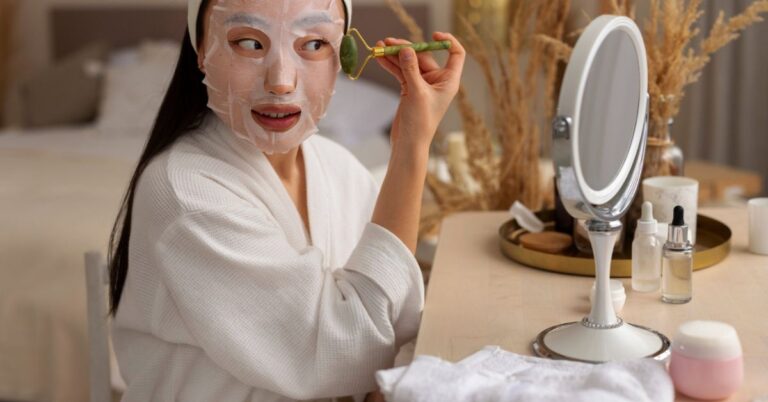Sunburn is a common and often painful consequence of overexposure to ultraviolet (UV) rays, typically from the sun. It occurs when UV radiation damages the DNA in skin cells, causing inflammation, redness, and sometimes blistering. While prevention is always the best approach, sometimes sunburn catches us off guard. When it does, it’s crucial to treat it promptly to alleviate discomfort and promote healing. This article will explore various home remedies that can provide relief from sunburn pain and inflammation, using items you likely already have in your home.
Cool Compresses: Your First Line of Defense
One of the most immediate and effective ways to soothe sunburned skin is by applying cool compresses. This simple remedy can provide significant relief by reducing the skin’s surface temperature and calming inflammation. To create a cool compress, soak a clean, soft cloth in cool water (not ice cold, as this can be too harsh on damaged skin), and gently apply it to the affected areas for 10-15 minutes at a time. Repeat this process several times a day, especially when the burn feels particularly painful or hot.
The cooling effect not only provides immediate comfort but also helps to constrict blood vessels, potentially reducing swelling and redness. Additionally, the moisture from the compress can help rehydrate the skin’s outer layer, which is crucial in the healing process. Remember to be gentle when applying and removing the compress to avoid further irritation to the sensitive sunburned skin.
Aloe Vera: Nature’s Sunburn Soother
Aloe vera has been used for centuries as a natural remedy for various skin conditions, including sunburn. This succulent plant contains compounds with anti-inflammatory, antioxidant, and antimicrobial properties, making it an excellent choice for soothing and healing sunburned skin.
The gel found inside aloe vera leaves contains glycoproteins that help reduce pain and inflammation, while polysaccharides stimulate skin growth and repair. To use aloe vera, you can either apply pure aloe vera gel directly from the plant or use a high-quality, commercially available aloe vera product. Look for products that contain a high percentage of aloe vera and avoid those with added fragrances or colors, as these can potentially irritate sensitive, sunburned skin.
Apply a thin layer of aloe vera gel to the affected areas several times a day. Not only will it provide immediate cooling relief, but it will also help keep the skin moisturized, which is crucial for healing and preventing peeling. Some studies suggest that aloe vera may even help protect skin cells from further UV damage, although it should not be relied upon as a substitute for proper sun protection.
Cold Milk Compress: A Dairy Solution to Sunburn
While it might sound unusual, a cold milk compress can be surprisingly effective in relieving sunburn discomfort. Milk contains lactic acid, which can help exfoliate dead skin cells, and proteins that can help soothe the skin and reduce redness and inflammation.
To create a milk compress, mix equal parts of cold milk and cool water. Soak a clean cloth in this mixture and apply it gently to the sunburned areas for about 20 minutes. Repeat this process every few hours as needed. The coolness of the milk will help lower the skin’s temperature, while the milk proteins create a protective film on the skin, helping to prevent moisture loss and promote healing.
The fat content in milk also acts as a natural moisturizer, helping to keep the skin hydrated. For best results, use whole milk, as it contains more fat and proteins than lower-fat alternatives. However, if you’re lactose intolerant or vegan, you can try a similar compress using cold chamomile tea, which also has soothing properties.
Oatmeal Bath: A Soothing Soak for Sunburned Skin
An oatmeal bath can provide significant relief for sunburned skin, especially when the burn covers a large area of the body. Oatmeal has been used for centuries to soothe various skin conditions due to its anti-inflammatory and moisturizing properties.
To prepare an oatmeal bath, grind a cup of plain, unflavored oatmeal (preferably colloidal oatmeal) into a fine powder using a food processor or blender. Fill your bathtub with cool water and add the oatmeal powder, stirring to ensure it’s well distributed. Soak in this bath for 15-20 minutes, allowing the oatmeal to work its magic on your skin.
The compounds in oatmeal, including avenanthramides and beta-glucans, help reduce inflammation and itching. The oatmeal also forms a protective barrier on the skin, helping to lock in moisture and promote healing. After your bath, pat your skin dry gently with a soft towel – don’t rub, as this can irritate sunburned skin. You may notice a thin, soothing film on your skin from the oatmeal.
Hydration: Healing from the Inside Out
When you have a sunburn, your body pulls fluid to the skin’s surface to help with the healing process, which can lead to dehydration. Therefore, increasing your water intake is crucial when dealing with sunburn. Proper hydration helps your body heal more efficiently and can even help prevent some of the long-term damage associated with sunburn.
Aim to drink at least 8-10 glasses of water per day, more if you’re spending time in the heat or if your sunburn is severe. You can also consume water-rich foods like watermelon, cucumber, and strawberries to help boost your hydration levels. Avoid alcoholic and caffeinated beverages, as these can contribute to dehydration.
Proper hydration doesn’t just help with healing; it’s also essential for overall skin health. Well-hydrated skin is more resilient and better able to protect itself against UV damage in the future. Remember, while drinking water is crucial, you should also moisturize your skin externally to prevent water loss through the damaged skin barrier.
Over-the-Counter Pain Relievers: Managing Discomfort and Inflammation
While natural remedies can provide significant relief, sometimes over-the-counter (OTC) pain relievers are necessary to manage the discomfort and inflammation associated with sunburn. Nonsteroidal anti-inflammatory drugs (NSAIDs) like ibuprofen or naproxen can be particularly effective.
These medications work by reducing the production of prostaglandins, compounds in the body that cause inflammation, pain, and fever. By taking an NSAID soon after sun exposure and continuing for the next 24-48 hours, you can significantly reduce pain and inflammation. This can make you more comfortable and may even help prevent some of the long-term skin damage associated with severe sunburns.
Acetaminophen is another option that can help with pain relief, although it doesn’t have the anti-inflammatory properties of NSAIDs. Always follow the dosage instructions on the package and consult with a healthcare provider if you have any concerns or pre-existing medical conditions.
Moisturize: Nourishing Sunburned Skin
Keeping sunburned skin well-moisturized is crucial for comfort and healing. When skin is sunburned, it loses moisture rapidly, which can lead to dryness, itching, and peeling. Regular application of a gentle, fragrance-free moisturizer can help combat these issues and support the skin’s natural healing process.
Look for moisturizers containing ingredients like aloe vera, vitamin E, or soy, which have soothing and healing properties. Avoid petroleum-based products, as these can trap heat in the skin. Apply moisturizer generously and frequently, especially after bathing when your skin is still damp, to lock in moisture.
For severely sunburned skin, consider using a moisturizer with 1% hydrocortisone for the first few days. This can help reduce inflammation and itching. However, don’t use it for more than a week without consulting a healthcare provider, as prolonged use can thin the skin.
Baking Soda Bath: Balancing Skin pH
A baking soda bath can be an effective remedy for sunburn relief. Baking soda, or sodium bicarbonate, has alkaline properties that can help balance the pH of sunburned skin, which tends to be more acidic. This can help soothe irritation and itching associated with sunburn.
To prepare a baking soda bath, add about 1/4 to 1/2 cup of baking soda to a cool bath and stir until it dissolves. Soak in this bath for about 15-20 minutes. The cool water will help bring down the skin’s temperature, while the baking soda works to soothe the burn.
After your bath, allow your skin to air dry or pat it gently with a soft towel. You may notice that your skin feels softer and less irritated. However, be aware that baking soda can be drying, so be sure to follow up with a gentle, fragrance-free moisturizer to keep your skin hydrated.
Stay Out of the Sun: Protecting Healing Skin
When you have a sunburn, it’s crucial to stay out of the sun until your skin has fully healed. Sunburned skin is more susceptible to further damage from UV rays, and additional sun exposure can not only be painful but can also increase your risk of long-term skin damage and skin cancer.
If you must go outside, take extra precautions to protect your skin. Wear loose, tightly-woven clothing that covers the sunburned areas. Choose fabrics in dark or bright colors, as these provide more protection than light colors. Don’t forget a wide-brimmed hat to protect your face, neck, and ears.
Apply a broad-spectrum sunscreen with an SPF of at least 30 to any exposed skin, even on cloudy days. Look for sunscreens labeled as “sensitive skin” or “for burned skin” as these are less likely to irritate your healing skin. Reapply every two hours, or more often if you’re swimming or sweating.
When to Seek Medical Help: Recognizing Severe Sunburn
While most sunburns can be treated at home, severe cases may require medical attention. Seek medical help if you experience any of the following symptoms:
- Blistering over a large portion of your body
- High fever (above 101°F or 38.3°C)
- Severe pain that doesn’t respond to over-the-counter pain relievers
- Symptoms of dehydration such as dizziness, rapid pulse, or reduced urination
- Signs of infection like increased pain, swelling, red streaks, or pus
- Confusion, headache, or vision problems
These symptoms could indicate a severe sunburn or sun poisoning, which may require professional medical treatment. In some cases, oral or topical steroids may be prescribed to reduce inflammation, or special burn dressings may be needed for extensive blistering.
Conclusion: Healing and Future Prevention
Sunburn can be painful and potentially dangerous, but with proper care and these home remedies, you can alleviate discomfort and promote healing. Remember, the best treatment for sunburn is prevention. Always use adequate sun protection, including broad-spectrum sunscreen, protective clothing, and seeking shade during peak sun hours.
As your sunburn heals, take it as a reminder of the importance of sun safety. Make sun protection a daily habit, not just during beach days or outdoor activities. Your skin will thank you with a healthier, more youthful appearance in the years to come. Stay safe, stay protected, and enjoy the sun responsibly!




